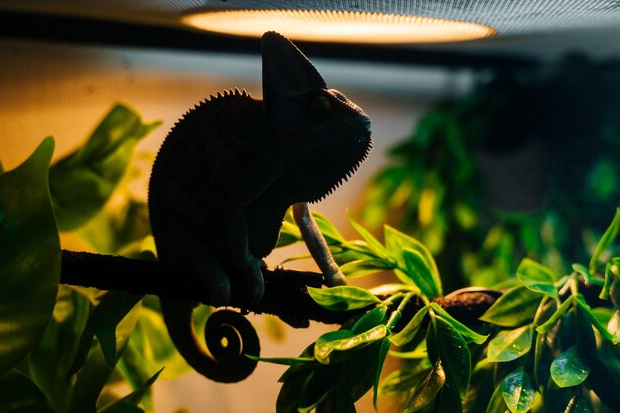As pet owners, we are constantly striving to provide the best care for our animals, especially when it comes to their environment. Reptiles, amphibians, and even certain small mammals require specific temperature conditions to stay healthy and thrive. Proper heating is crucial for their well-being, and one of the most effective ways to regulate their environment is by using reptile heating lights and pet heat lamps. These tools not only help maintain a comfortable temperature but also mimic the natural conditions needed by different species.
Why Are Reptile Heating Lights Important?
Reptiles, unlike mammals, are cold-blooded creatures, which means they rely on external heat sources to regulate their body temperature. Proper temperature control is essential for various biological processes such as digestion, metabolism, and overall health. Without the correct heating, reptiles can become lethargic, stressed, and even fall ill.
Reptile heating lights are designed to mimic the sun’s natural warmth, providing your reptile with the heat they need to stay active and healthy. These lights not only warm up their environment but also simulate a day-night cycle, which is crucial for their circadian rhythms.
Key Benefits
- Temperature Regulation: Reptile lights help maintain a specific temperature range in your pet’s enclosure, ensuring that they stay within their ideal thermal zone.
- Improved Digestion: Heat helps reptiles digest their food properly. Without adequate warmth, reptiles may struggle to digest their meals, leading to health issues like malnutrition.
- Natural Behavior Simulation: Using reptile lights that mimic natural sunlight encourages healthy behavioral patterns, including basking, hunting, and mating.
- UVB Light for Vitamin D3 Synthesis: Many reptile heating lights are equipped with UVB light, which is vital for reptiles’ calcium absorption and overall bone health.
Understanding Pet Heat Lamps and Their Benefits
Pet lamps are versatile lighting solutions designed to provide warmth to various types of pets, including reptiles, small mammals, birds, and even amphibians. While reptile heating lights are specifically designed for reptiles, pet lamps can be used for a broader range of animals. These lamps help maintain a consistent temperature in your pet’s habitat, which is vital for their comfort and health.
For animals like reptiles, birds, and small mammals that require warmth, pet heat lamps can be an essential tool in their daily care. They provide a reliable and energy-efficient way to regulate the temperature in a pet’s habitat, ensuring that your pet stays comfortable in colder environments.
Key Benefits of Pet Heat Lamps:
- Comfortable Temperature Regulation: Pet lamps are designed to keep your pets comfortable by ensuring that their living space remains at an optimal temperature.
- Energy Efficiency: Many modern pet heat lamps are energy-efficient, providing long-lasting warmth while minimizing electricity consumption.
- Promoting Natural Activity Patterns: Like heating lights, pet lamps help simulate the natural warmth that animals need to regulate their body temperature. This can promote healthy activity patterns, such as basking for reptiles and sunbathing for small mammals.
- Flexibility: Pet lamps come in various wattages and styles, making them suitable for a wide range of animals and environments, from reptile tanks to small animal cages.
Types of Reptile Heating Lights and Pet Heat Lamps
There are several types of heating lights and pet lamps available on the market. Each type offers unique benefits depending on your pet’s specific needs. Here’s an overview of the most popular options:
1. Incandescent Heat Bulbs
Incandescent heat bulbs are a common choice for both reptile lights and pet heat lamps. They emit heat while providing some light, making them ideal for reptiles and small animals that need warmth during the day or night.
- Best for: Reptiles, small mammals, and amphibians.
- Pros: Provide heat, last long, and are readily available.
- Cons: Can become very hot, so care must be taken to avoid burns.
2. Ceramic Heat Emitters
Ceramic heat emitters are ideal for providing heat without emitting light. This makes them perfect for nocturnal reptiles and pets that require warmth during the night without disrupting their natural sleep cycle.
- Best for: Reptiles and amphibians that need warmth at night.
- Pros: Provides heat without light, energy-efficient.
- Cons: Can be expensive compared to other types of heat lamps.
3. UVB and UVA Bulbs
Some reptile heating lights combine both heat and UVB light, which is essential for reptiles like turtles, lizards, and snakes. UVB rays help reptiles synthesize vitamin D3, which is necessary for calcium absorption and bone health.
- Best for: Reptiles requiring both heat and UVB light (e.g., turtles, bearded dragons).
- Pros: Provides both heat and essential UVB rays for reptiles’ health.
- Cons: Requires a combination of light and heat to be effective.
4. Halogen Bulbs
Halogen bulbs are a type of incandescent light that is more energy-efficient. They provide heat and light, making them suitable for many pet habitats.
- Best for: Reptiles, amphibians, and birds.
- Pros: Energy-efficient, long-lasting, and provides strong heat.
- Cons: Can be more expensive than incandescent bulbs.
5. Basking Lights
Basking lights are designed to provide intense heat to a small area of your pet’s habitat, mimicking the sun’s direct heat. These are especially beneficial for species that enjoy basking, such as turtles, iguanas, and certain types of snakes.
- Best for: Reptiles and amphibians that require direct basking.
- Pros: Simulates natural sunbathing behavior.
- Cons: Can be too intense if not properly regulated.
How to Choose the Right Reptile Heating Lights and Pet Heat Lamps?
Selecting the right reptile lights for heating and pet lamps depends on several factors, including the type of pet, their specific heating needs, and the size of their habitat. Here are some tips to help you make the best choice:
1. Consider Your Pet’s Species and Habitat
Different pets have different heating requirements. For example, desert-dwelling reptiles like bearded dragons require higher temperatures and basking spots, while tropical reptiles like geckos need a more moderate heat source. Choose a pet heat lamp or heating lights that suits your pet’s natural environment.
2. Choose the Right Wattage
The wattage of the lamp determines how much heat it will emit. For smaller enclosures, a lower wattage may be sufficient, while larger habitats may require higher wattage lamps. Always ensure that the wattage matches the size of the enclosure to avoid overheating or underheating.
3. Use a Thermostat
To maintain a consistent temperature, use a thermostat with your reptile heating lights or pet heat lamps. This will allow you to regulate the heat output and prevent any temperature fluctuations that could harm your pet.
4. Consider Day and Night Heating Needs
Some animals need heat during the day, while others need it at night. If your pet requires 24-hour warmth, consider using ceramic heat emitters or low-light options. For daytime heat, reptile lights with UVB may be ideal.
Frequently Asked Questions (FAQs)
1. How do I know if my reptile heating lights are the right temperature?
To ensure proper heating, always use a thermometer to monitor the temperature in your pet’s habitat. Place the thermometer in different areas of the enclosure to check for hotspots and cooler areas, ensuring your pet has access to the right temperature gradient.
2. Can I use a pet heat lamp for reptiles and mammals?
Yes, pet heat lamps can be used for a variety of animals, including reptiles, birds, and small mammals. However, make sure the heat lamp you choose is suitable for your pet’s specific needs in terms of temperature and light.
3. How long should I leave my reptile heating lights on?
Reptiles generally require 12-14 hours of light during the day, followed by 10-12 hours of darkness at night. Use a timer to maintain a consistent light cycle for your pet.
4. Can reptile heating lights cause burns?
Yes, reptile heating lights can get very hot and may cause burns if not positioned properly. Always ensure that the lamp is securely mounted and out of your pet’s reach to prevent accidents.
5. Are pet heat lamps energy-efficient?
Many pet heat lamps, especially ceramic emitters and halogen bulbs, are energy-efficient and designed to provide consistent heat while using less energy compared to traditional incandescent bulbs.
Conclusion
Providing the right environment for your pets is crucial for their health and well-being, and using the right reptile heating lights and pet heat lamps is an essential part of this. Whether you have a reptile, small mammal, or bird, choosing the proper heating solution will help ensure your pets stay warm, comfortable, and healthy. With the right knowledge and careful selection of products, you can create the perfect habitat for your pet, enhancing their quality of life.
Read More – Reptile Supplies and Reptile Products: Everything to Know
















Leave a Reply